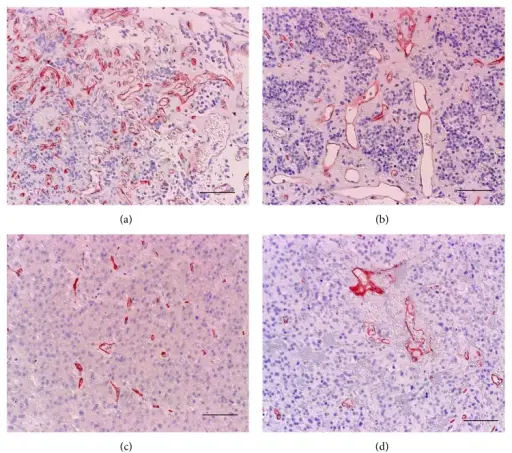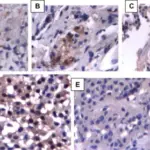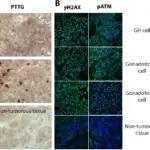Corticotroph adenomas are mostly basophilic and infrequently chromophobic, trivial microadenomas during diagnosis.
Associated syndromes include:
- Cushing syndrome
- Nelson syndrome
What is the Pathology of Corticotroph Adenomas?
The pathology of corticotroph adenomas is:
-Etiology: The cause of corticotroph adenomas is the amalgamation of molecular genetic changes and hormonal stimulation acting as a promoter.
-Genes involved: GNAS1 gene.
-Pathogenesis: The sequence of events that lead to corticotroph adenomas is as follows. The mutation and activation of Gsα result in the generation of cyclic adenosine monophosphate (cAMP), a potent mitogenic stimulus for variety of endocrine cell types, hence endorsing hormone synthesis and secretion and cellular proliferation.
-Morphology: The morphology associated with corticotroph adenomas shows that it may range in size from small termed microadenoma to large adenomas, spherical, soft, and encapsulated.
-Histology: The histology associated with corticotroph adenomas shows densely granulated basophils and sometimes sparsely granulated chromophobes.
How does Corticotroph Adenomas Present?
Patients with corticotroph adenomas are typically more frequent in females 3.5:1 female-to-male ratio presents at an age range of 30 and 40 years. The symptoms, features, and clinical findings associated with corticotroph adenomas include the symptoms of Cushing syndrome which include weight gain, muscle weakness, bone prone to fractures, tiredness, and mood disorders.
How are Corticotroph Adenomas Diagnosed?
Corticotroph adenomas are diagnosed through laboratory studies imaging and biopsy.
How are Corticotroph Adenomas Treated?
Corticotroph adenomas are treated with surgery, stereotactic radiosurgery, and adjuvant therapy.
What is the Prognosis of Corticotroph Adenomas?
The prognosis of corticotroph adenomas is poor as they tend to recur despite surgical intervention.



